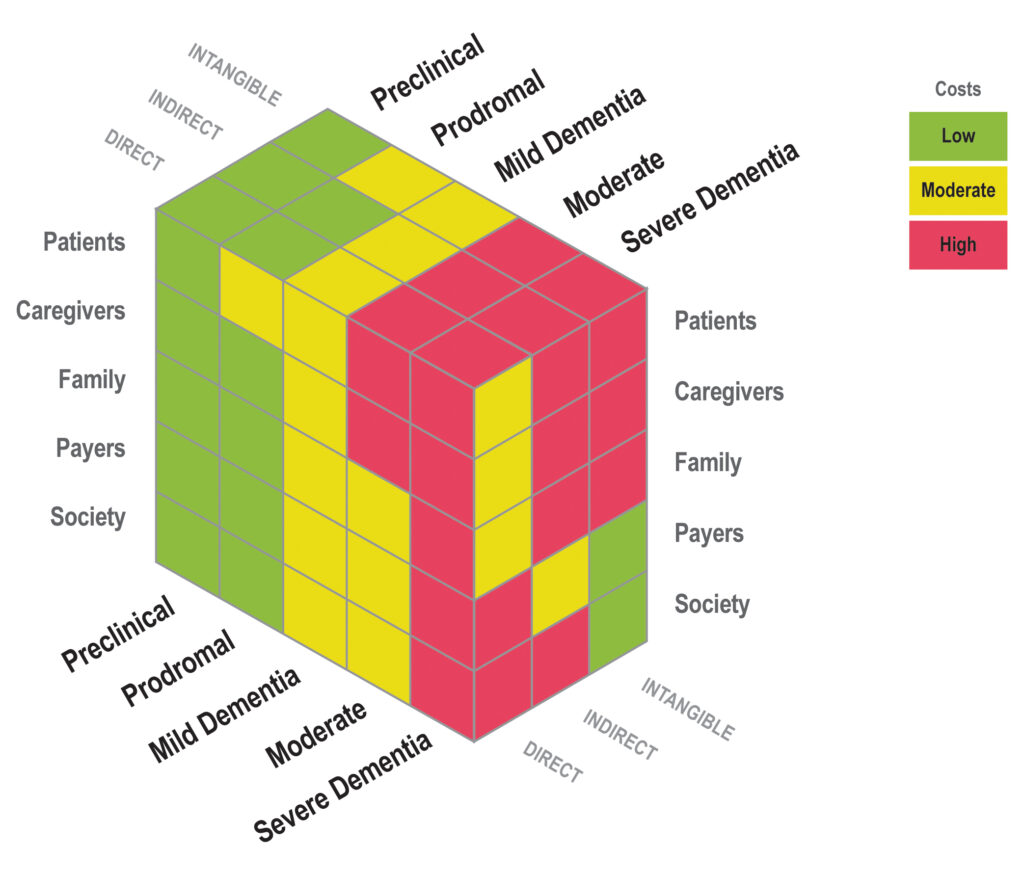Standard cost-effectiveness measures the value of a treatment based on the cost for an additional unit of health where units of health are measured in quality-adjusted life years (QALYs). For Alzheimer’s disease, however, this approach may be limited. A paper by Garrison et al. (2021) identifies the petals of the value flower that are particularly relevant when evaluating new treatments for Alzheimer’s disease. These include:
- Productivity. As Alzheimer’s affects both the patient’s and caregivers’ ability to work, value assessment clearly should take into account productivity impacts.
- Scientific spillovers. “Scientific spillovers” is a concept that measures the value of scientific research that advances the overall field, regardless of direct resulting health benefit.
Because there have been many years of failed treatments, any innovation in Alzheimer’s may be particularly valuable if it can help push forward the field of knowledge and potentially inform future treatments. - Caregiver impact. Caring for a loved one with Alzheimer’s can be a full-time job. The value from any reduction in the financial and quality of life impact on caregivers should be included in formal value assessment.
- Insurance value. Individuals are often risk averse. Thus the availability of a treatment for Alzheimers that can improve quality of life implies that people at risk of getting Alzheimer’s–and not just Alzheimer’s patients themsevles–would highly value this treatment.
- Equity. A paper by Basu et al. (2021) notes that Alzheimer’s “…health and economic consequences fall disproportionately on certain demographics, including older adults, women, people of color, and those with lower levels of education and wealth.” Thus, quantitative approaches, such as distributional cost effectiveness analysis (DCEA) or multi-criteria decision analysis (MCDA)–should be used to quantify the additional value any Alzheimer’s treatment would have in terms of reducing disparities in health outcomes.
The paper also has a helpful figure which shows how Alzheimer’s cost fall on different stakeholders as the disease progresses.

What is clear from the article is the value assessment of new Alzheimer’s medications will be anything but simple.